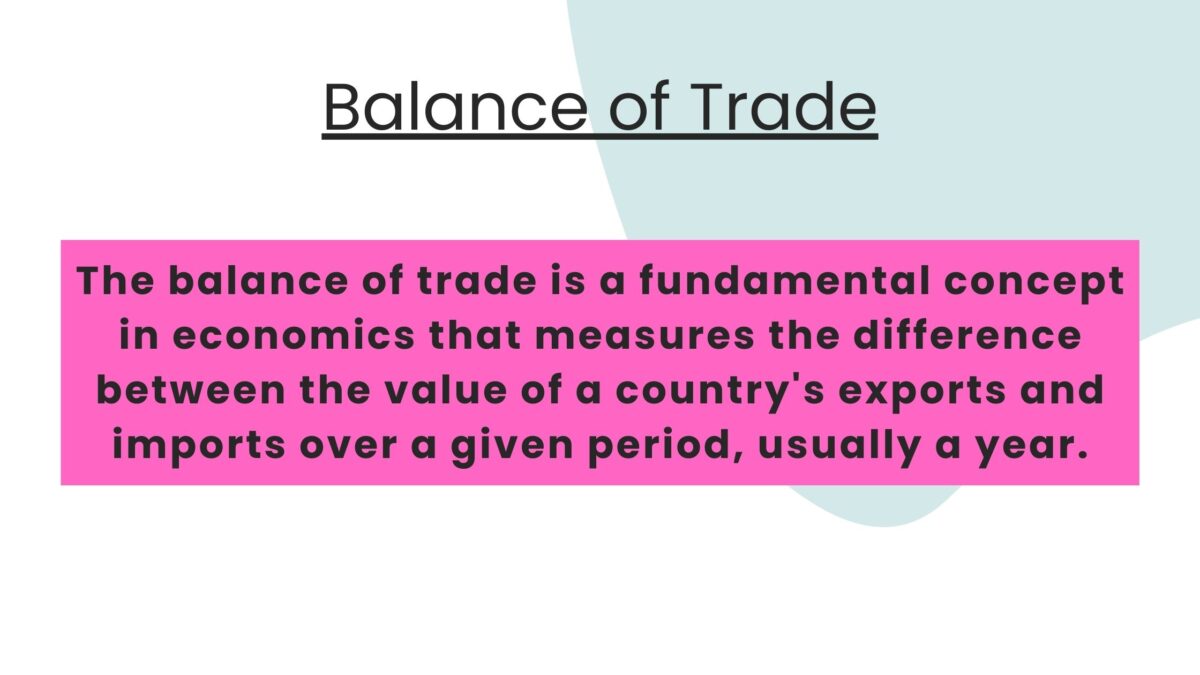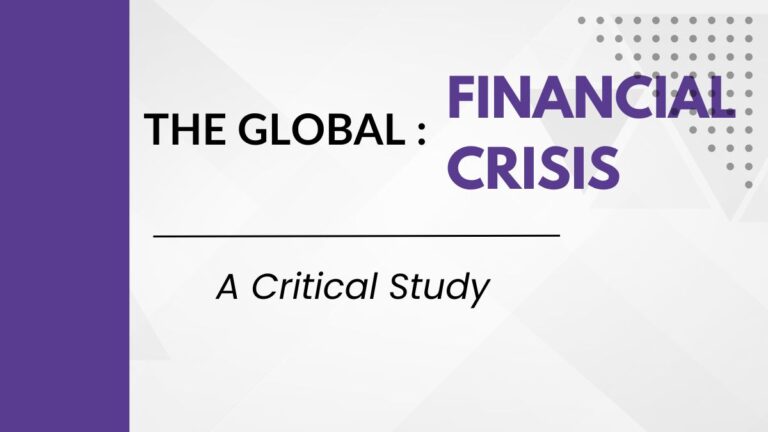Balance of Trade: Definition, Measurement and Significance [updated 2024]

The balance of trade is a fundamental concept in economics that measures the difference between the value of a country’s exports and imports over a given period, usually a year. It serves as a critical indicator of a nation’s economic health and its position in the global economy.
A positive balance of trade, or a trade surplus, occurs when the value of exports exceeds the value of imports, while a negative balance of trade, or a trade deficit, occurs when the value of imports surpasses the value of exports. In this comprehensive exploration, we will delve into the intricacies of the balance of trade, its significance, determinants, implications, and policy considerations.
Historical Background
The concept of balance of trade dates back centuries, evolving alongside the development of international trade. Early mercantilist economists, such as Thomas Mun and Jean-Baptiste Colbert, emphasized the importance of maintaining a trade surplus to accumulate wealth and power. Their ideas laid the groundwork for policies aimed at boosting exports and restricting imports to achieve favorable trade balances.
Components of Balance of Trade
To understand the balance of trade, it’s essential to dissect its components:
- Exports: These are goods and services produced domestically and sold to foreign buyers. They contribute positively to the balance of trade, as they generate revenue and enhance a country’s economic output.
- Imports: Imports refer to goods and services purchased from foreign markets and consumed domestically. While they satisfy domestic demand for a wide range of products, excessive imports can lead to trade deficits.
Determinants of Balance of Trade
Several factors influence a country’s balance of trade, including:
- Economic Conditions: The state of the domestic economy, including levels of production, consumption, investment, and employment, can affect trade balances. Strong economic growth often leads to increased exports, while recessions may dampen demand for imports.
- Exchange Rates: Exchange rate fluctuations impact the competitiveness of exports and imports. A depreciation of the domestic currency can make exports cheaper for foreign buyers, boosting export revenues and improving the trade balance. Conversely, a strong currency may make imports more affordable, leading to a higher trade deficit.
- Relative Prices: Changes in relative prices, such as shifts in global commodity prices, can influence trade balances. For example, a rise in oil prices may increase the value of a country’s imports, contributing to a wider trade deficit.
- Trade Policies: Government policies, such as tariffs, quotas, and trade agreements, directly affect the volume and composition of trade. Protectionist measures, aimed at shielding domestic industries from foreign competition, can alter trade balances by reducing imports or promoting exports.
- Global Demand and Supply: Trends in global demand for goods and services, as well as changes in production capabilities worldwide, impact trade balances. Shifts in consumer preferences, technological advancements, and geopolitical developments all influence the flow of trade.
Significance of Balance of Trade
The balance of trade holds significant implications for both individual economies and the global economy:
- Economic Health: A persistent trade surplus may indicate a competitive advantage in international markets, reflecting a country’s ability to produce high-quality goods and services efficiently. Conversely, chronic trade deficits may signal underlying weaknesses, such as low productivity, uncompetitive industries, or excessive consumption.
- Foreign Exchange Reserves: Trade surpluses contribute to the accumulation of foreign exchange reserves, which can be used to stabilize the domestic currency, finance imports, or invest abroad. Countries with substantial reserves wield greater influence in global financial markets.
- Employment and Income: Export-oriented industries often create jobs and generate income, supporting economic growth and prosperity. A positive balance of trade can boost employment levels and raise living standards by expanding opportunities for workers and businesses.
- Debt and Investment: Persistent trade deficits may necessitate borrowing from foreign creditors to finance consumption beyond domestic production capacity. While capital inflows can stimulate investment and economic development, excessive reliance on foreign borrowing may lead to unsustainable debt levels and vulnerability to external shocks.
- Global Imbalances: Large and persistent trade imbalances between nations can distort international trade flows, exacerbate currency tensions, and contribute to economic instability. Addressing imbalances requires coordinated policy efforts and structural reforms to promote sustainable and balanced growth.
Policy Considerations
Governments employ various policy instruments to manage their balance of trade and promote economic stability:
- Exchange Rate Policies: Central banks may intervene in currency markets to influence exchange rates and improve trade competitiveness. Depreciation or appreciation of the domestic currency can affect export and import dynamics, influencing the trade balance.
- Trade Agreements: Bilateral and multilateral trade agreements aim to liberalize trade by reducing barriers such as tariffs, quotas, and regulatory obstacles. By expanding market access and fostering economic integration, trade agreements can enhance export opportunities and contribute to balanced trade.
- Fiscal and Monetary Policies: Fiscal measures, such as tax incentives for exporters or subsidies for strategic industries, can bolster competitiveness and stimulate exports. Similarly, monetary policies, including interest rate adjustments and liquidity management, can influence exchange rates and trade dynamics.
- Structural Reforms: Structural reforms aimed at enhancing productivity, promoting innovation, and improving the business environment can strengthen the competitiveness of domestic industries and boost export performance. Investments in education, infrastructure, and research and development can foster long-term growth and sustainability.
- Global Cooperation: Addressing imbalances and promoting sustainable trade requires international cooperation and coordination. Forums such as the G20 and the World Trade Organization play vital roles in facilitating dialogue, resolving disputes, and advancing collective solutions to global economic challenges.
Case Studies
To illustrate the complexities of balance of trade dynamics, let’s examine two contrasting case studies:
- China: China has experienced rapid export-led growth over the past few decades, driven by its manufacturing prowess and competitive advantages in labor-intensive industries. Its trade surpluses have enabled the accumulation of significant foreign exchange reserves, fuelling domestic investment and infrastructure development. However, criticism of China’s trade practices, including currency manipulation and intellectual property violations, has sparked trade tensions with its major trading partners, such as the United States.
- United States: The United States has consistently run trade deficits for decades, reflecting its reliance on imported goods and services to satisfy domestic demand. While trade deficits can be partially attributed to structural factors such as the role of the U.S. dollar as the global reserve currency and the country’s consumption patterns, they have also raised concerns about job losses, deindustrialization, and the erosion of manufacturing capabilities. Efforts to rebalance trade, including renegotiating trade agreements and imposing tariffs on imports, have been contentious and have sparked retaliatory measures from trading partners.
Conclusion
The balance of trade is a multifaceted concept that reflects the intricate interplay of economic, political, and social factors shaping international trade relations. While trade surpluses and deficits carry distinct implications for individual economies, achieving balanced and sustainable trade requires coordinated efforts at the national and global levels.
By understanding the determinants, significance, and policy considerations surrounding the balance of trade, policymakers can formulate strategies to promote inclusive and resilient economic growth in an increasingly interconnected world.
Also read:
- National Domestic Product (NDP)
- Gross National Product (GNP)
- Understanding of NNP (Net Nation Product)
- 15 FAQ on Personal Finance
- Gross Domestic Product (GDP)
- 15 FAQ on 80-20 Rule (Pareto Principle)
- Depreciation- Meaning, Definition, Types and Calculation
- Fiscal Deficit- Definition, Calculation and Significance
- Balance of Payments (BoP): Explained






